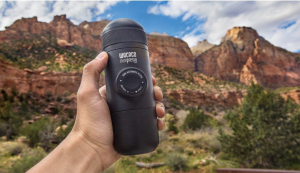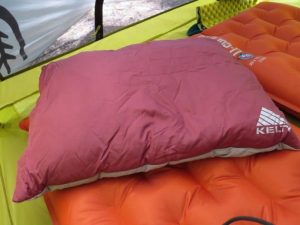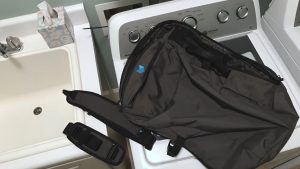Camping is the perfect way to get in touch with nature – You escape from your daily tough routines to relax and give your mind and body the existential feel.
After returning from your outdoor trip, you have to deal with your dirty gear, which includes your tent too. A tent with mold, fungus, or a dreadful smell can be tough to clean. But hey, we are going to help you with every step of cleaning your tent and you will be ready for a new adventure.

Table of Contents
First When to Clean Your Tent?
After returning from a trip, closely examine your tent for cleaning. A little dust cannot damage your tent, but if it’s layered in dust and stuff, you need to be careful because mold and fungus can develop which can damage your tent. Cleaning the dust and debris before storing your tent is a must.

Collect Your Supplies
- Lukewarm water.
- A dishwashing soap.
- A larger tub. You cannot wash your tent in the washing machine.
- A cleaner- Cleaner for outdoor gears and clothes like Nikwax Tech Wash® will do.
- A non-abrasive or gentle sponge or cloth.
How to Wash a Tent?

Set up your tent for cleaning, fill the tub with lukewarm water, and prepare a mixture of mild liquid soap. Soak the tent in it and gently wipe the whole tent. Washing your tent in washing machines, dryers, or using detergents will only cause more damage than good. Complete a 5-minute, thorough wash with your hands, make sure every corner of the tent is washed. Let it soak for 20 minutes.
Observe the water, if it’s still dirty, take it out and repeat the washing process. Deep clean the zippers, rinse with the water solution and make sure to completely dry the water. Dirt can damage the zippers to the point where they are inoperable. Rinse the tent with clean water and hang the clean tent or lay it on a flat surface in an open area under the sun. Avoid clipping it from the corners it will damage the fabric.
Take a soft, dry cloth, clean the tent poles to avoid any corrosion. If the tent has been out on the beach, the salty water will cause rusting. Carefully examine the tent, especially the seams before storing it away otherwise mold could grow. Leave it to dry out for five days if it’s possible.

How to Clean a Tent With Mold?
If your tent has caught mold and fungus, you need to be more than careful. To clean it properly, use an enzyme cleaner on the affected areas to stop the further growth of mold.
You may require soaking your tent completely in the solution, that depends on the severity of the mold.
Read the instructions about the products carefully before applying them. The chemical compounds can damage the tent material and the waterproofing. Be careful and wear a mask to avoid any chemical fumes or mold getting into your lungs.
How to Clean a Tent That Smells?

You wouldn’t want to spend a night in a smelly tent. In the outdoors, there is a lot of dust and it’s totally unavoidable. Dirty shoes, dust, water, and mold will make your tent smell like hell. To have a great camping experience, wash your tent by soaking it in a mixture of fresh or lukewarm water, white vinegar, and lemon juice in a large tub.
Any foul odors and stinky smells will vanish. The solution can also get rid of the mold and spores stuck on the tent’s surface.
How to Avoid Color Transfer?
Color transfer happens when two fabrics are in contact for a longer time in the presence of moisture or heat. This also happens in the tent’s case. Color transfer can also happen in the case of the tent because of the material fabric of the tents.
To avoid color transfer, ensure that the tent is completely dry and there is no moisture where you are going to store your tent.
How to Store a Tent?

Avoid storing a damp or wet tent and store it in a duffel bag. Storing your tent in the original storage sack that came with your tent is not a good idea, as it is best for traveling not storing. Store your tent in a loose bag, probably with a mesh. The loosely packed tent will not damage the tent’s fabric, zippers, and seams, while the mesh will keep the tent fresh as a new one.
The next thing you have to do is choose a dry and cold place instead of a hot or humid one. The humid environment will enhance the growth of mold and mildew that will eventually make you clean it again. Store your packed tent in your bedroom, closet, or a place where temperature fluctuations are negligible. Avoid attic, garage, or basement.
Refresh the Waterproof Coatings

Dirt and debris can reduce the DWR (durable repellent coating) and waterproof coating of the tent fabric. Renewing the waterproof properties of the tent is necessary. If you haven’t tried a tech wash to restore your tent’s DWR, we recommend you to try Revivex® by GearAid®
Dampen the tent and rain fly with water, spray the DWR one panel at a time.
Use a soft sponge to spread the DWR evenly on the surfaces. Polish off the surfaces and wipe it until it starts drying. Make sure to cover the whole tent in DWR spray, from the top of the tent to the floor. Completely dry the tent before storing it away.
General Care Tips:
- While camping, place your tent in a shady area, if possible, to avoid the severe effects of the weather.
- Put some ground cloth under the tent. You can buy pre-cut sizes for your tent or simply cut the size yourself.
- Ground cloths prevent damage to your tent’s bottom, so it’s an easy and simple solution.
- Put a mat or rug in front of the tent door to remove dust and mud from your shoes before entering the tent.
- Carefully clean the tent floor on a daily basis.
- Do not keep food inside the tent or clean the tent after any meals, otherwise small creatures will tear the tent fabric in search of food.










